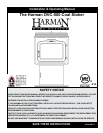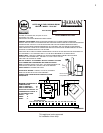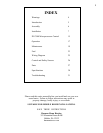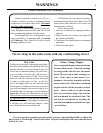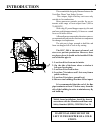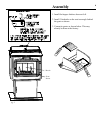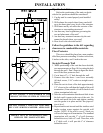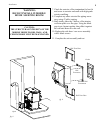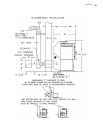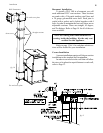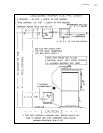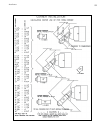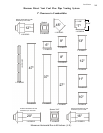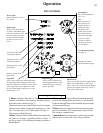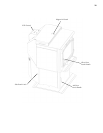
4
Always empty the hopper when not burning
for more than a week. When left standing
for long periods with wet coal, the pusher
block will rust and corrode, causing it to
seize. If the stoker is then turned "on",
damage to the pusher assembly and feed
motor could result. This will be considered
neglect and will void the warranty on those
parts. Always check to see that moving
parts are free before using, if the unit has
not been burned for a period of time. This
can best be determined by watching the
cam block and pusher arm inside the right
rear side door.
Freshly delivered coal is watered down to elimi-
nate dust when loading and unloading. Wet rice
coal does not ow as well as damp or dry coal.
We do not recommend burning wet coal; how-
ever, we realize if it's the only coal you have,
it is better to burn it than be cold. If you must
burn wet coal, the feed rate must be increased
in order to get the same size re. As the wet
coal in the hopper dries out, the feed rate must
be decreased. Loading wet coal once or twice a
year will not damage your stove as long as it is
hot and burning. The damage is caused when the
hopper has wet coal in it when the stove is cold.
This will cause rust and corrosion and it is totally
the operator’s fault. Usually after the coal dries
for three or four days, depending on conditions,
it will ow very well and feed properly. Feed
rate will be the same as with dry coal.
Wet Coal
WARNINGS
(Never sleep in the same room with any coal burning stove.)
Carbon Monoxide (CO) Awareness
Carbon monoxide, referred to as CO, is a
colorless, odorless gas that is produced during
combustion of coal and other fuels. CO fumes
are toxic and can be fatal.
The DVC 500 is a closed loop system spe-
cially designed to prevent the escape of CO and
other combustion products from the stove.
Even though this stove is designed to be as
safe as possible, it is important that you install
a CO detector. This is true for oil, gas, or wood
burning products as well.
CO detectors are very sensitive and may
sound an alarm for fumes other than CO or CO
from sources other than the stove such as car
or lawn mower exhaust.
If the alarm sounds
1. Increase ventilation by opening windows
or doors.
2. Make sure the stove doors and hopper lid
are closed and latched.
3. Check stove for electrical power and normal
operation.
4. Check for false alarm.
Always Empty Hopper
Never use gasoline, gasoline-type lantern fuel, kerosene, charcoal lighter uid, or similar liq-
uids to start or “freshen up” a re in this heater. Keep all such liquids well away from the heater
while it is in use.



